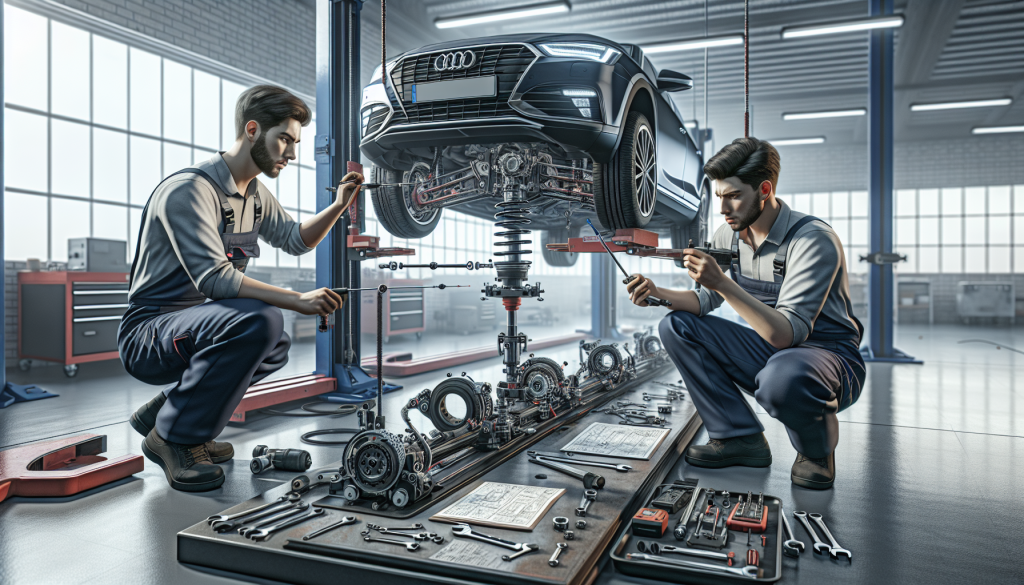Getting Your Suspension Aligned: What You Need to Know
Keeping your car’s suspension aligned is like making sure your shoes fit right. It keeps your ride smooth, your tires lasting longer, and your car handling like a dream. Let’s break down what you need to know about suspension alignment.
Why Suspension Alignment Matters
Think of suspension alignment as the secret sauce for your car’s performance. When your wheels are properly aligned, they hit the road just right, making your tires wear evenly and last longer. Plus, it makes your car handle better, which means safer and more comfortable driving. If your alignment’s off, you’ll notice uneven tire wear, wobbly handling, and even worse gas mileage. Want to dive deeper? Check out our article on why alignment matters.
The Big Three: Camber, Caster, and Toe
Suspension alignment isn’t just about pointing your wheels straight. It’s about tweaking three main angles: camber, caster, and toe. Each one plays a big role in how your car drives.
| Component | What It Is | What Happens When It’s Off |
|---|---|---|
| Camber | The tilt of the wheels when you look at your car head-on. | Causes uneven tire wear and makes your car pull to one side. |
| Caster | The tilt of the steering axis when you look at your car from the side. | Affects steering stability and makes it hard to drive straight. |
| Toe | The direction your wheels point compared to your car’s centerline. | Leads to feathered tire wear and sloppy handling. |
Curious about how to tweak these? We’ve got detailed guides on adjusting camber, adjusting caster, and adjusting toe.
Precision Tools: The Unsung Heroes
Getting your suspension just right isn’t a job for a hammer and nails. You need high-precision tools like alignment machines, laser systems, and computerized gear. These tools make sure every adjustment is spot-on, so your car performs at its best and your tires last longer. Want to geek out on the tools? Check out our article on alignment tools.
These tools don’t just make the job easier; they make it better. Technicians trained on the latest equipment can spot and fix alignment issues more accurately. For more on how techs get trained, see our piece on technician training.
Keep Your Car in Top Shape
Understanding suspension alignment isn’t just for gearheads. It’s for anyone who wants their car to run smoothly and safely. Proper alignment means better drivability, longer-lasting tires, and a safer ride. For more tips and tricks, explore our suspension alignment guide.
So, next time your car feels a bit off, remember: a little alignment goes a long way.
Keep Your Ride Smooth: Suspension Alignment Tips
Taking care of your car’s suspension alignment isn’t just about keeping things straight; it’s about making sure your ride is smooth and your tires last longer. Here’s the lowdown on keeping your suspension in check, from regular inspections to spotting tire wear.
Check-Ups: The Doctor’s Orders for Your Car
Just like you need regular check-ups, so does your car. Keep an eye on your suspension alignment every 6,000 to 10,000 miles, or follow what your car’s manual says. Regular checks can catch problems early before they turn into expensive repairs. For more on keeping your suspension in top shape, check out our suspension system maintenance guide.
| What to Check | How Often |
|---|---|
| Suspension Alignment | Every 6,000 – 10,000 miles |
| Tire Rotation | Every 5,000 – 8,000 miles |
Test Drive: The Proof is in the Pudding
After getting your suspension aligned, a quick road test is a must. This isn’t just a joyride—it’s to make sure everything feels right. If something’s off, the tech can tweak it on the spot. This step ensures your car handles like a dream. Want to know more? Dive into our suspension alignment process.
New Tires, New Alignment
Got new tires? Great! But don’t forget to check the alignment. Misalignment can chew through new tires faster than you can say “flat tire.” An alignment check when you get new tires helps them last longer and keeps your car handling well.
Seasonal Tweaks: Hot and Cold
Seasons change, and so does your car’s alignment. Cold weather can make parts shrink, and heat can make them expand. These changes can mess with your alignment. So, it’s smart to get your alignment checked with the seasons. For more on this, see our article on seasonal suspension alignment adjustments.
Watch Those Tires: They Tell a Story
Your tires can tell you a lot about your alignment. Look for uneven wear, like feathering, cupping, or one-sided wear. These signs mean it’s time to get your alignment checked. Catching these early can save your tires and your wallet. For tips on what to look for, visit monitoring tire wear patterns.
| Wear Pattern | What It Means |
|---|---|
| Feathering | Toe is off |
| Cupping | Suspension parts are worn |
| One-Sided Wear | Camber is off |
Keeping your suspension aligned means a smoother ride and longer-lasting tires. For more tips and tricks, explore our resources on correcting suspension issues and solutions for suspension issues.



